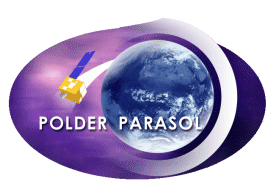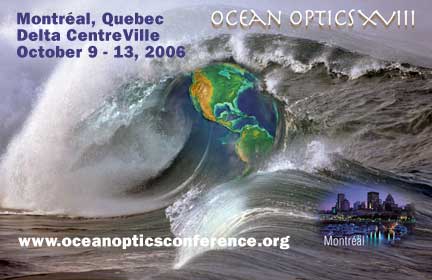

|
|
The group will address a number of issues, including defining the major PFTs and proposing a common terminology, summarising the current understanding of the physics of PFT identification from ocean colour, reviewing existing techniques/algorithms to detect PFTs from marine reflectance, and examining how PFTs derived from ocean colour can be meaningful for the validation/improvement of global biogeochemical models. The final outcome of the working group will be the publication of an IOCCG report on the topic.
An example of the PHYSAT method to classify phytoplankton species: coccolithophore (grey) and diatom (red) blooms can be clearly seen in this image off the coast of Patagonia (after Alvain et al. (2005), DSR I)

The merged Level-3 binned files can be downloaded from NASA's "Ocean Color Web" Level-3 Web Browser http://oceancolor.gsfc.nasa.gov/cgi/level3.pl or via a link from the FTP Page for Ocean Colour Products: http://oceancolor.gsfc.nasa.gov/ftp.html.
The United States National Polar-orbiting Operational Environmental Satellite System (NPOESS) will be a state-of-the-art environment-monitoring satellite system, maintaining the continuity of data required for weather forecasting and global climate monitoring up to the year 2020. The NPOESS payload is scheduled to include the Visible Infrared Imager / Radiometer Suite (VIIRS) which will provide an operational capability for ocean colour observations and a variety of derived ocean colour products. Three agencies (NOAA, NASA and the Department of Defence, DOD) have formed an integrated program office to manage NPOESS. Significant cost increases, however, have triggered a review of the NPOESS program's current status by the US Government Accountability Office (GAO).
Late last year NPOESS cost growth exceeded a legislatively mandated threshold that required DOD to certify the program to Congress. This placed any decision about future direction on hold until certification takes place in June 2006. In the meantime, the program office has implemented an interim plan to continue work on key sensors and other program elements using fiscal year 2006 funding. Following certification, a decision on future direction should be clear.
For further information on the GAO report see:
|
 POLDER-1 and POLDER-2 ocean colour data have been reprocessed with several significative improvments. The final scientific ocean colour products are now available on the POLDER website/order desk at http://polder.cnes.fr. Products are available for a total period of 15 months:
HDF data files can be directly vizualized or downloaded using the "on-line products" menu, and animations of POLDER Level 3 maps can also be viewed here. Alternatively, an ordering interface is available to receive the complete products (register first to create an account and to obtain a password). New POLDER products include bio-optical parameters such as water absorption and backscattering coefficients. A very good agreement with in-situ measurements has been obtained. Research work is still being undertaken to exploit polarized and directional information. 
 Information about algorithms, products and validation results can be found on the POLDER mission website at http://smsc.cnes.fr/POLDER/A_produits_scie.htm. Article submitted by Catherine Proy, CNES - POLDER Project.

The board of the Alliance of Marine Remote Sensing (AMRS) recently voted, with regret, to close down AMRS resources and terminate the organization, due to severe financial constraints. Last year AMRS co-sponsored the 8th International Conference on Remote Sensing for Marine and Coastal Environments (May 2005, Halifax, Canada), in collaboration with the Altarum Institute. AMRS was also the publisher of the high quality "backscatter" magazine, which promoted the use of remote sensing technologies in the aquatic environment. As one of the corporate members of AMRS, we are sad to see the termination of this organisation after a decade and a half of successful operation.
Several new job opportunities and post-doctoral positions have been posted on the IOCCG Employment Opportunities webpage, including a post-doctoral position at the University of the Azores and a Satellite Imagery Specialist at the IAEA Radiometerics Laboratory in Monaco. Please see http://www.ioccg.org/employment.html for further details on all positions.

The Ocean Optics XVIII conference will take place from 9-13 October 2006, in Montreal, Canada. It is the largest gathering of international scientists dealing with all aspects of remote sensing of ocean colour. The dead line for pre-registration is 1 June 2006. For more information, please consult the Ocean Optics conference website or contact Dr. Emmaneul Boss, Chairman, Ocean Optics XVIII Planning Committee. |
|
|
Material for possible inclusion in the IOCCG Newsletter should be submitted to the Project Scientist. Subscription to the IOCCG Mailing List.
|
|
|